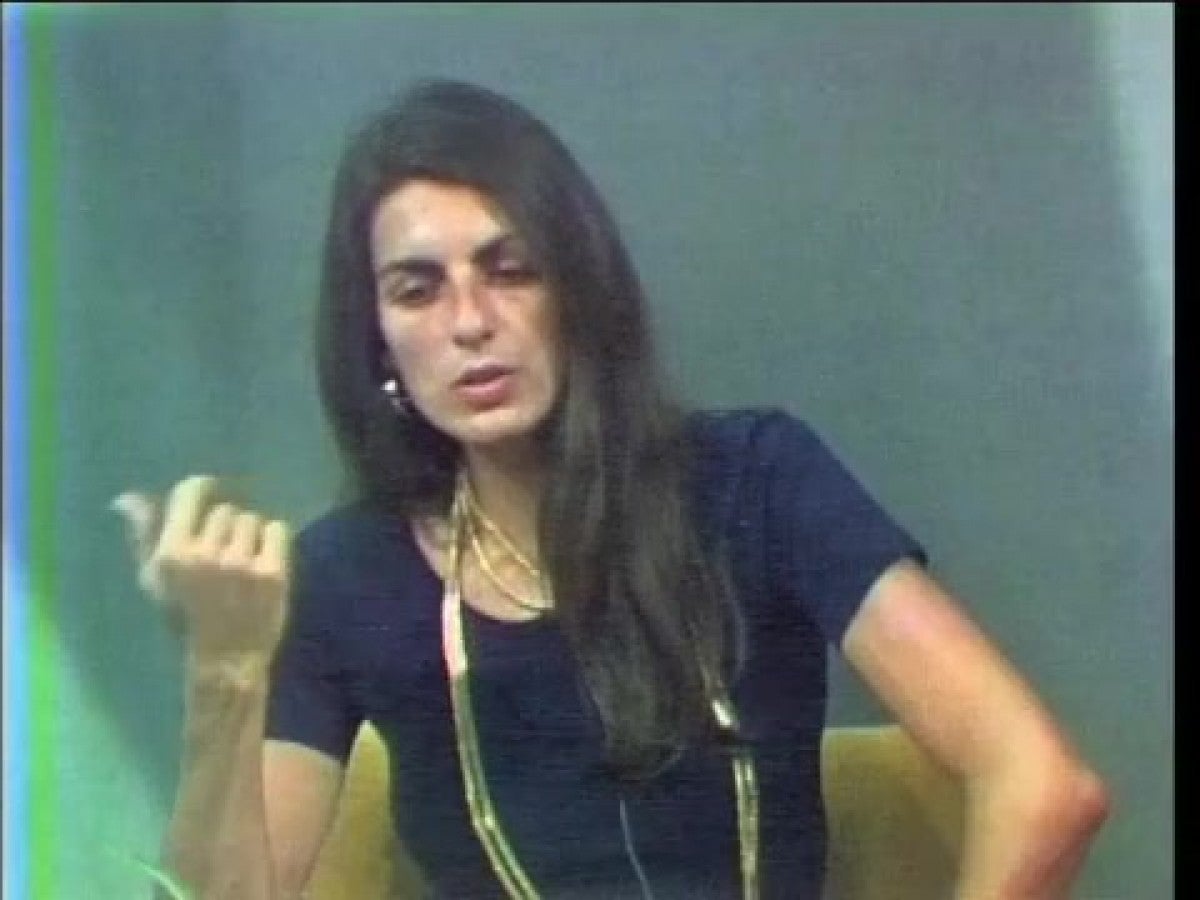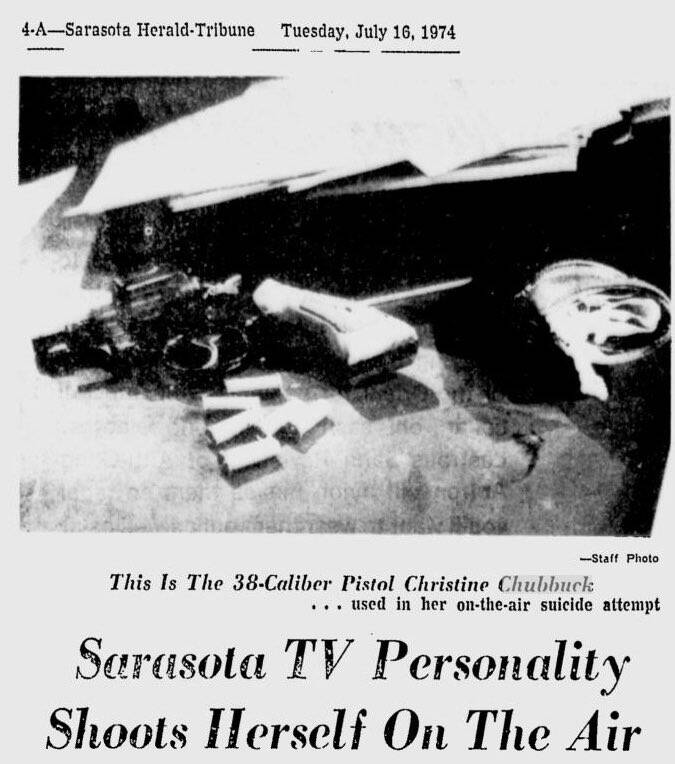Christine Chubbuck Suicide: The Untold Story & Lost Footage Explained
Could a single, desperate act, broadcast live for the world to witness, truly encapsulate a life? On July 15, 1974, in Sarasota, Florida, Christine Chubbuck, a news reporter, shocked viewers and etched herself into history by taking her own life on live television, leaving a legacy shrouded in both fascination and tragedy.
The morning of July 15th, 1974, at around 9:30 AM, the airwaves of WXLT-TV (now WWSB) in Sarasota, Florida, crackled with the usual pre-news chatter. Viewers tuned in, expecting their regular dose of local updates and human-interest stories. What they received, however, was a scene of unimaginable horror. Christine Chubbuck, the station's news reporter, paused during her broadcast, announcing she had something "else" to show them. With a chilling composure, she drew a .38 caliber revolver and shot herself behind her right ear. Thousands of stunned viewers across the region, and perhaps even further afield, became involuntary witnesses to a tragedy that would forever alter their perception of the news, media, and the fragility of the human spirit. The event triggered an immediate flurry of phone calls to the station, a chaotic symphony of shock and disbelief. The stations master tape of the broadcast was immediately seized. Chubbuck was rushed to Sarasota Memorial Hospital, where she was pronounced dead 14 hours later.
| Full Name | Christine Powell Chubbuck |
| Born | August 24, 1944, Hudson, Ohio, USA |
| Died | July 15, 1974 (aged 29), Sarasota, Florida, USA |
| Cause of Death | Suicide by gunshot |
| Occupation | News Reporter |
| Known For | Suicide on live television |
| Education | Laurel School, Ohio; Ohio University |
| Station | WXLT-TV (now WWSB), Channel 40, Sarasota, Florida |
| Family | George and Margaretha Chubbuck (Parents), |
| Link to Reference Website | Wikipedia - Christine Chubbuck |
Chubbuck's actions were a culmination of a complex personal struggle. Those who knew her described a woman battling depression and loneliness, facing professional frustrations, and grappling with a sense of isolation. She often spoke openly about her struggles with suicidal thoughts, yet the finality of her act still shocked those closest to her. Her family, though aware of her internal battles, could not have foreseen the dramatic form her despair would take. At work, Chubbuck was recognized for her strong journalism skills and somewhat unusual personality, making her a memorable figure at the station.
- Drake Album Covers Ranked Reviewed From Thank Me Later To For All The Dogs
- Idaho Murders New Details Emerge One Year After Tragic Events
The incident sparked a media frenzy, with the story making headlines worldwide. The broadcast itself became notoriously elusive. Although thousands witnessed the suicide live, all copies of the video were reportedly destroyed at the request of her family, making it a forbidden relic. This destruction, however, did little to quench the publics curiosity. The story has morphed over the decades, becoming a subject of urban myths and online fascination. The details surrounding the event, and the lack of readily available footage, only fueled the mystery.
The event has had a peculiar resurgence online, where groups became obsessed with finding the lost broadcast footage. This enduring intrigue into the lost footage is a testament to the enduring power of the story. The quest to understand what was broadcast that day, and why, continues to captivate and disturb.
The cultural impact of Chubbuck's final act continues to resonate. It is, in some ways, comparable to the incident involving wrestler Owen Harts death during the WWE Over the Edge pay-per-view in 1999. The video of Hart's fall was held back, and despite rumors and speculation, has never been released to the public. Similarly, the Chubbuck broadcast remains a potent symbol of media ethics, mental health, and the unpredictable nature of human suffering. This year's Sundance Film Festival even included films examining the events of that day.
- Neil Patrick Harris Amy Winehouse Party Backlash Apology After Resurfaced Photo
- Is Aaron Pierre Married Dating Life Rumors Explored
This years Sundance Film Festival saw the release of multiple films attempting to unravel the circumstances leading up to her death. This interest is a reminder of the questions this tragedy still provokes: What pushes a person to such a desperate act? How do we balance the demands of the news with the dignity of the individual? The legacy of Christine Chubbuck continues to provoke conversations about mental health, media ethics, and the delicate balance between public interest and personal tragedy.
The decision to take her own life was reportedly preceded by many months of depression. There was a persistent sense of isolation, compounded by both personal and professional setbacks. As a woman in a male-dominated field, she struggled to advance and build meaningful connections. She struggled with depression and announced she was going to show viewers another first, an attempted suicide. she then drew a revolver and shot herself behind the right ear. The chilling finality of her act stunned viewers and the wider world alike.
Four decades after her death, her story continues to draw interest. This ongoing attention indicates how the story has become an essential part of our understanding of mental health, media ethics, and the consequences of ignoring human suffering. The narrative surrounding Christine Chubbuck underscores the importance of acknowledging mental health struggles and the need for responsible and empathetic reporting.
The elusive nature of the broadcast further adds to its mystique. The grainy videos surfacing online are a stark reminder of the tragedy that occurred on that day. The fact that such a tragic event was broadcast live on television, and that the footage has been removed from the public eye, creates an air of mystery around it.
The actions of Christine Chubbuck continue to spark interest and debate decades after her death. Her actions sparked interest in the media coverage of suicide, and the ethical obligations of media outlets. This case continues to be studied for its psychological and social implications. The case remains a poignant reminder of how mental health struggles and the pressures of public life can sometimes intersect in a devastating way.
The story has been re-examined by Chilean director Antonio Campos, who is releasing a film about the events that led up to Chubbuck's death. Campos explores the months before Chubbuck's suicide. This film seeks to delve into the life of a journalist who, after a long battle with depression, chose to end her life. The film adds another layer to the ongoing conversation about Christine Chubbuck's legacy.
The phrase "never to be copied, written over or destroyed," written on the master tape of the broadcast, underscores the weight and significance of this event. Despite the efforts to keep the footage private, urban legends and myths persist. The legacy of Christine Chubbuck is a stark reminder of the complexities of human existence, the need for empathy, and the vital role of mental health awareness.
The final report by Chubbuck is still a topic of conversation, and it represents a dark chapter in the history of media. The phrase "#lostfootage #darkhistory," which appears in social media posts, highlights how much the story still fascinates those interested in the hidden stories of history.
- Find Most Recent Montgomery County Bookings In Updated
- Is Aaron Pierre Married Dating Life Rumors Explored

Christine Chubbuck suicide video ‘has been located’ The Independent

Journalist's troubling on air suicide is revisited on the big screen

Christine Chubbuck, The Reporter Who Killed Herself On Live TV